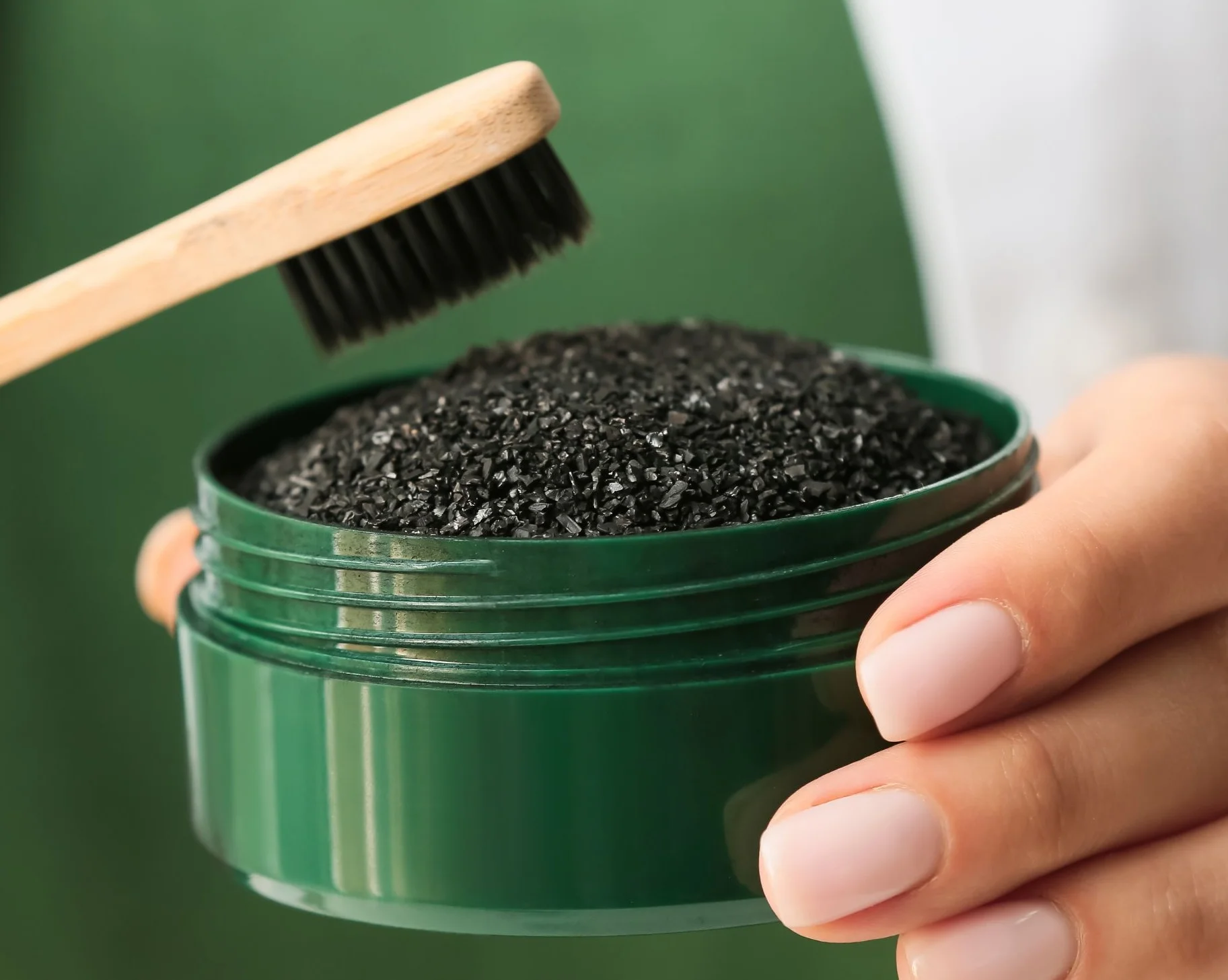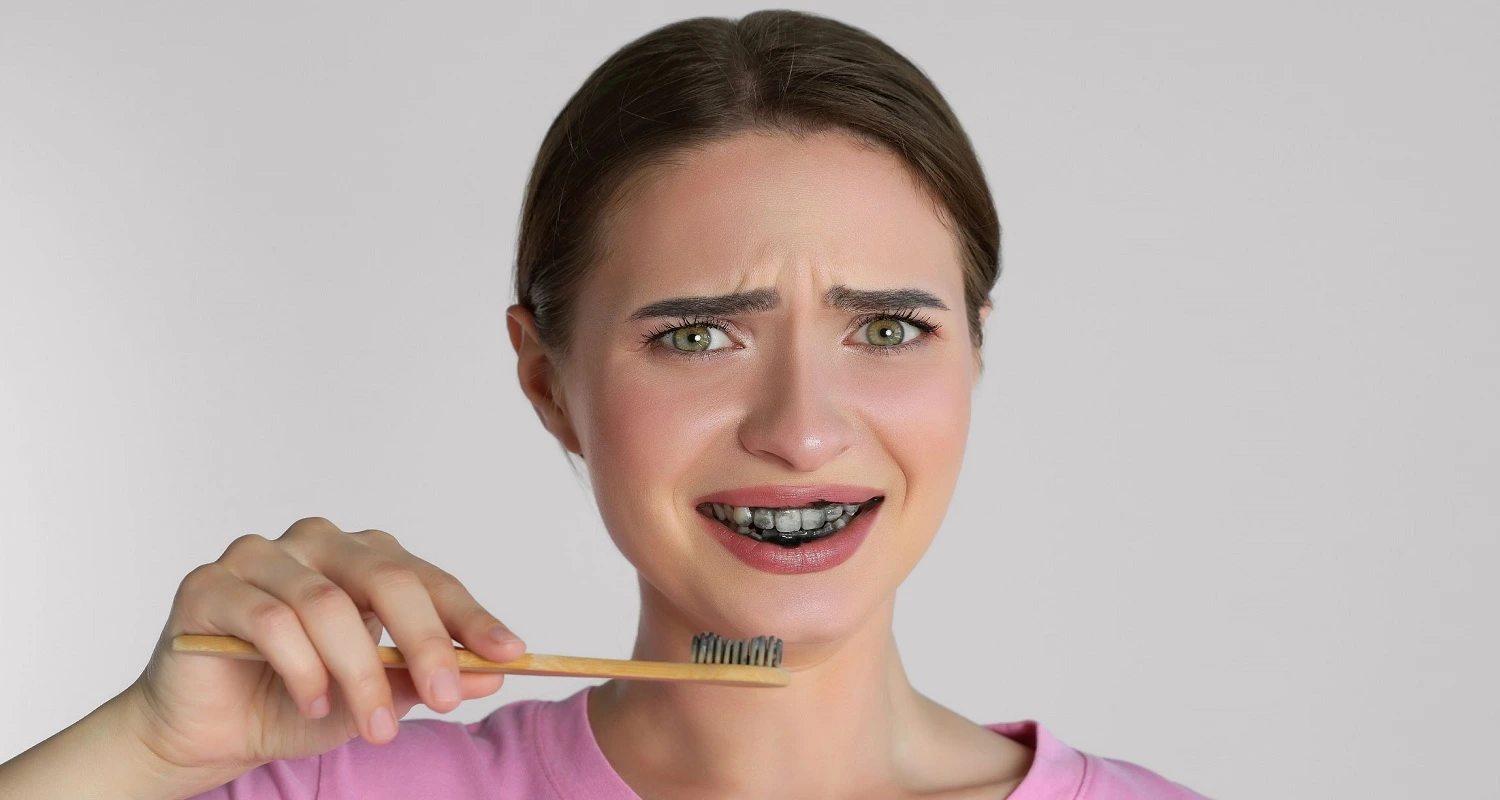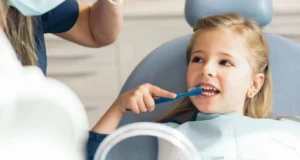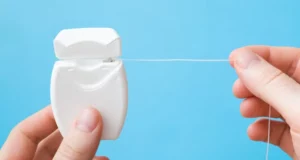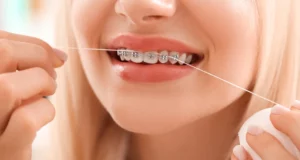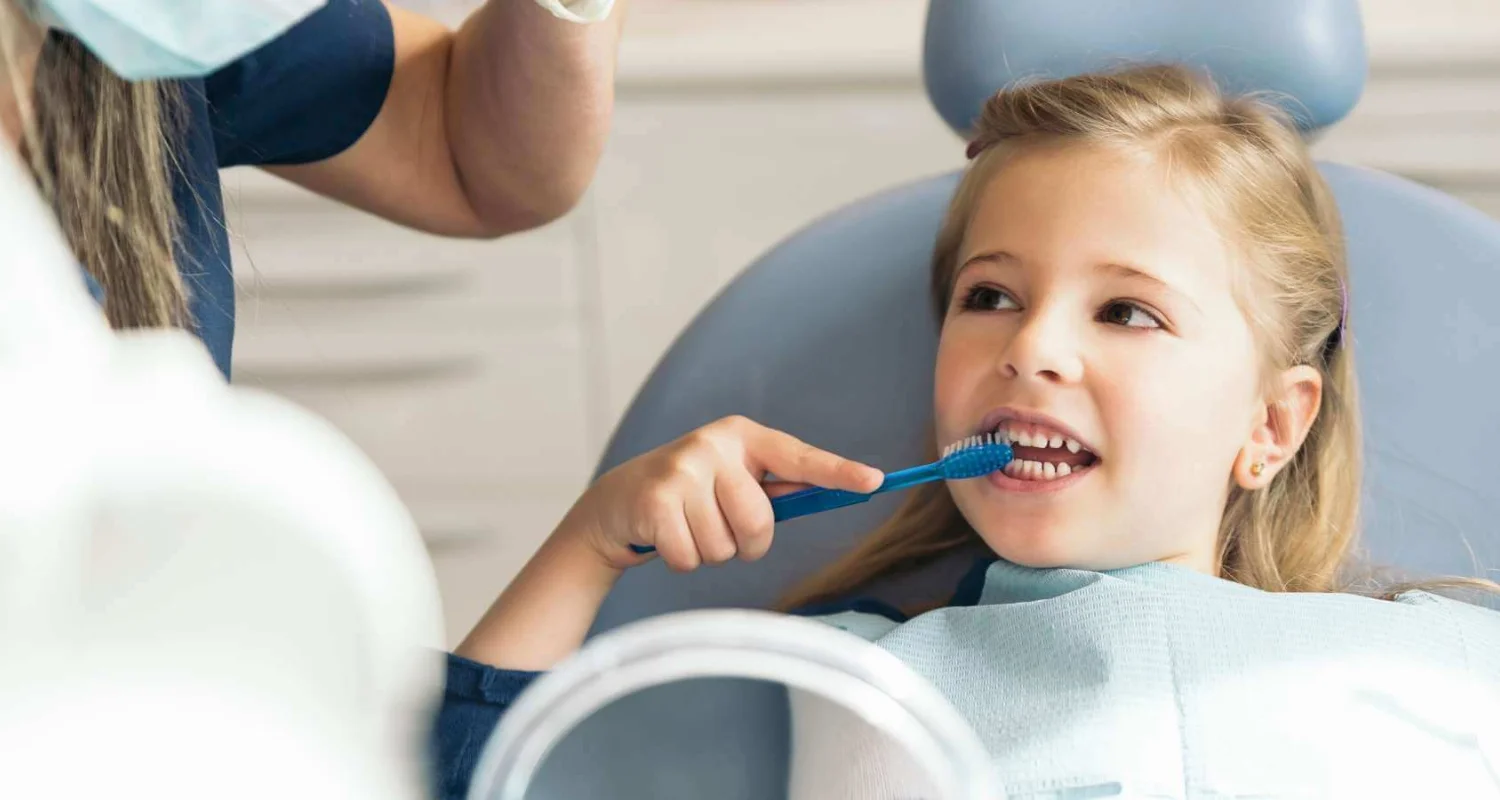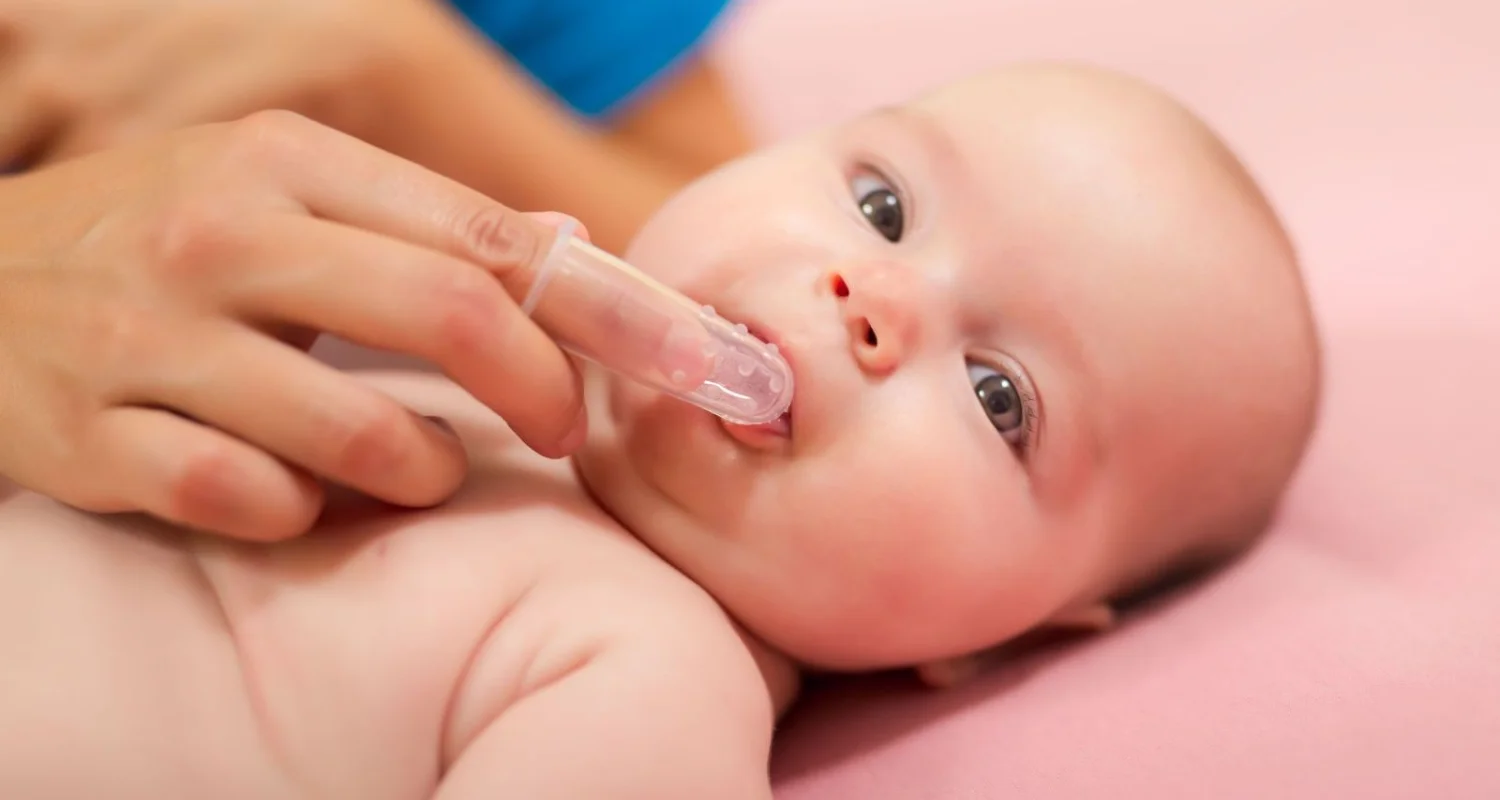Last Updated on: 26th September 2024, 03:48 pm
✓ Fact Checked 🕓
❙ Our team of writers, editors, and medical experts rigorously evaluates each article to ensure the information is accurate and exclusively cites reputable sources.
❙ We regularly assess how the content in this article aligns with current scientific literature and expert recommendations in order to provide the most up-to-date research.
Charcoal and Teeth Whitening: A Comprehensive Guide
For many people, achieving a bright white smile has become a priority. Fortunately, various methods rely on natural and easily accessible products, such as activated charcoal. In this article, we will explore the link between charcoal and teeth whitening.
What is Activated Carbon?
Activated charcoal is a porous material known for its ability to absorb impurities and toxins. Its use in dentistry is increasingly common, especially in powder form, to whiten teeth.
History of Teeth Whitening
The desire for a white smile is not recent. Activated charcoal is one of the oldest and most natural oral hygiene elements. In ancient times, Egyptians crushed wood charcoal and mixed it with other ingredients, such as baking soda and salt, to create a rudimentary toothpaste. This practice had the main objective of removing stains and food deposits from the teeth, leaving a brighter smile
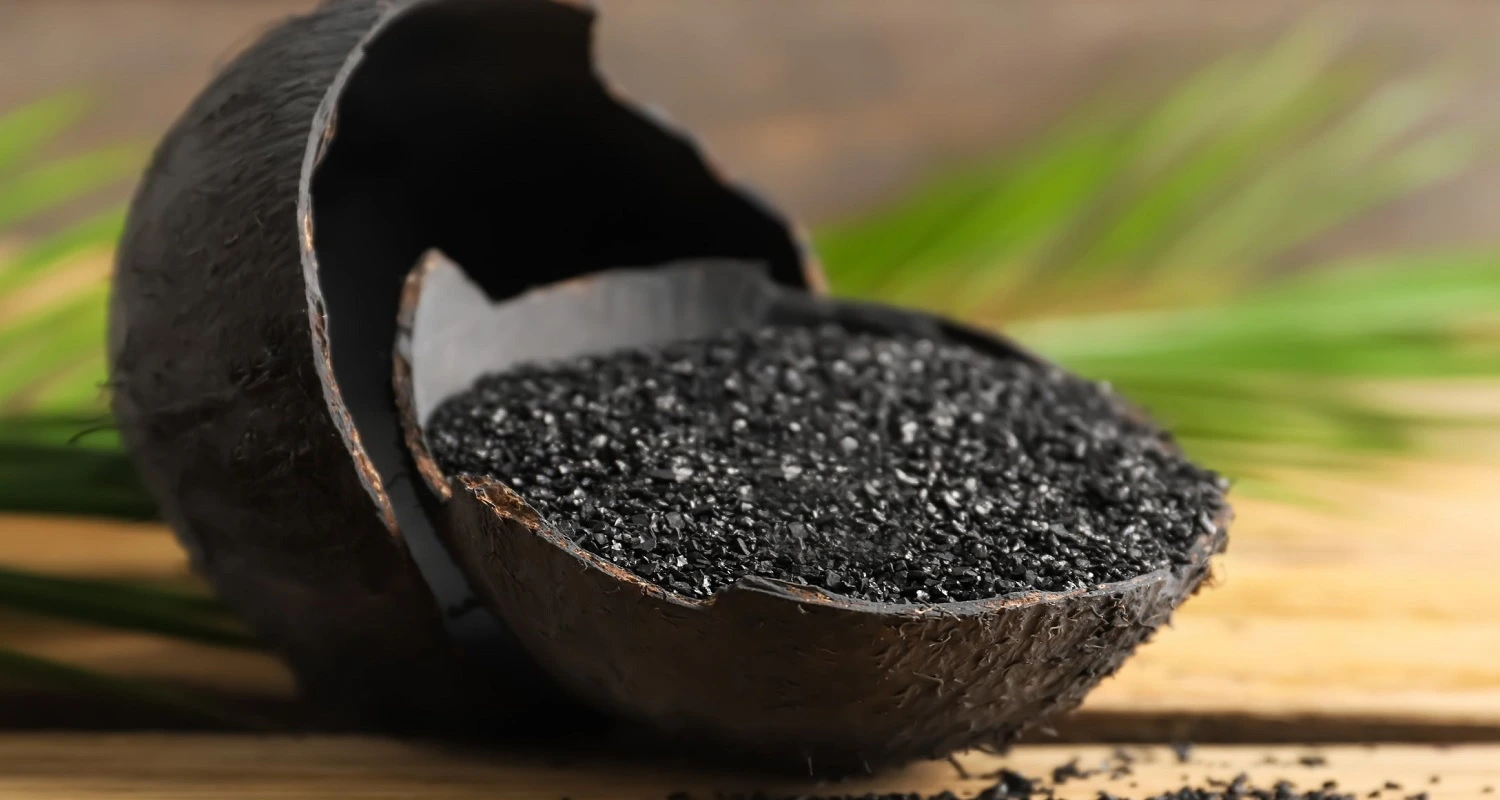
Evolution of Activated Carbon in Dentistry
As dentistry evolved, so did the use of activated charcoal. In the 19th century, commercial toothpaste began to be developed that contained activated charcoal as the main ingredient. This toothpaste promised not only to whiten teeth but also to eliminate bad breath and combat gum problems.
Today, activated charcoal is used in a variety of dental applications, including teeth whitening and treating bad breath or halitosis. It has become a popular ingredient in natural oral care products due to its ability to absorb toxins and remove surface stains from teeth.
Activated Charcoal in Teeth Whitening
One of the best-known applications of activated charcoal in dentistry is its use in teeth whitening. Activated charcoal has become a star ingredient in a variety of teeth-whitening products, from toothpaste to powders and strips. It works by absorbing stain-causing particles on the surface of your teeth, resulting in a whiter, brighter smile.
Benefits of Teeth Whitening with Activated Charcoal:
1. Activated charcoal is a natural method of whitening teeth, making it attractive to those who prefer to avoid harsh chemicals.
2. It can help remove stains caused by the consumption of coffee, tea, red wine, and tobacco.
3. Some studies suggest that activated charcoal can also help improve oral health by reducing the presence of harmful bacteria in the mouth.
4. A recent study showed that activated charcoal-based toothpaste can be effective, fast, and safe, although the results are inferior to teeth whitening performed with other products.
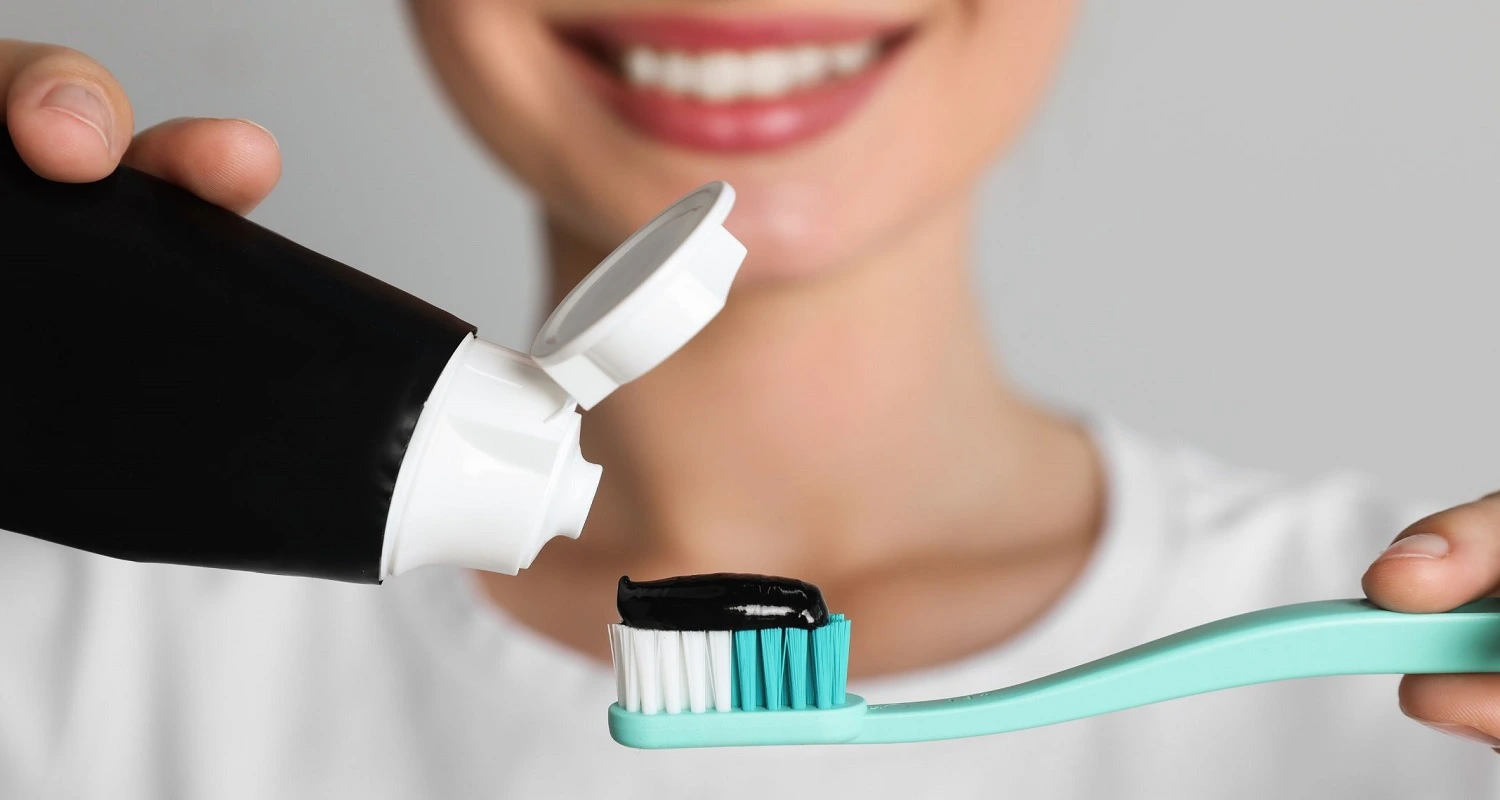
Considerations about Teeth Whitening with Activated Charcoal
● Not all dentists endorse teeth whitening with activated charcoal, as concerns about tooth abrasion may arise.
● A study published in 2023 showed that, although charcoal can be effective in whitening teeth, it produces less satisfactory results in patients than other teeth whitening methods, such as the use of carbamide peroxide-based products.
● Excessive use of teeth whitening products with activated charcoal could damage tooth enamel, resulting in tooth sensitivity.
● It is important to follow the product instructions and not overuse it to avoid possible unwanted side effects.
How to Use Charcoal Powder to Whiten Teeth
Studies have shown that the most effective and safe way to use charcoal to whiten teeth is with products that contain this active ingredient since they offer controlled quantities that have already been previously tested. However, some people prefer to choose to apply it purely at home. You can follow the following steps:
1. Choose the right product
Before you begin, it is important to select an activated charcoal powder specifically designed for teeth whitening. Make sure it is a quality product, preferably with natural ingredients and without harmful chemical additives.
2. Prepare your teeth and charcoal
Brush your teeth as you normally do, preferably with a mild toothpaste. This helps remove any debris on your teeth that may interfere with whitening. Next, moisten a soft toothbrush and lightly dip it in the activated charcoal powder.
3. Learn to rush
With the brush already impregnated with charcoal, brush your teeth gently for approximately 2 minutes. Do it with gentle, circular movements, concentrating on all areas, especially those where stains are most visible.
4. Rinse carefully
Once you have finished brushing, rinse your mouth several times with water until the liquid runs completely clear. It is important to make sure that all the carbon has been removed from your mouth and teeth.
5. Post-carbon brushing
After rinsing, it is advisable to brush your teeth again with your usual toothpaste. This helps remove any remaining carbon residue and freshens your breath.
Risks: Charcoal and Teeth Whitening
Despite its benefits, whitening with activated charcoal is not without risks. It is important to know and understand them to avoid damage to your teeth and gums.
1. Enamel abrasion
● Enamel wear: Activated charcoal is an abrasive material that can wear down tooth enamel if used incorrectly or too frequently. This can lead to enamel erosion, increased tooth sensitivity, and an increased risk of cavities and dental disease.
● Loss of natural shine: Excessive use can also lead to a loss of the natural shine of your teeth, leaving them duller and more vulnerable.
2. Effectiveness and variable results
● Limited results: Activated charcoal is most effective in removing superficial stains, but does not have a great impact on deep or intrinsic stains.
● Unrealistic expectations: Some people may expect miraculous or very fast results, which is not always possible with this method.
3. Risks to gums and soft tissue
● Irritation and inflammation: Using activated charcoal can irritate the gums and other soft tissues in the mouth, especially if used roughly.
● Gingival recession: Aggressive or prolonged use can contribute to recession of the gums, exposing tooth roots and increasing tooth sensitivity.
4. Interaction with dental restorations
● Adherence to restorations: Charcoal can adhere to restorations such as fillings, crowns or veneers, affecting their color and effectiveness.
● Elimination difficulty: It can be difficult to completely remove carbon from these surfaces, which may require professional cleaning or deep dental cleaning.
5. General health problems
● Aspiration or ingestion: There is a risk of accidentally breathing in or ingesting activated charcoal, which could cause respiratory or gastrointestinal problems.
● Drug interactions: Activated charcoal can absorb certain medications, reducing their effectiveness.
6. Unknown long-term effects
● Lack of research: There are not enough studies evaluating the long-term effects of charcoal teeth whitening, so the potential long-term risks are largely unknown.
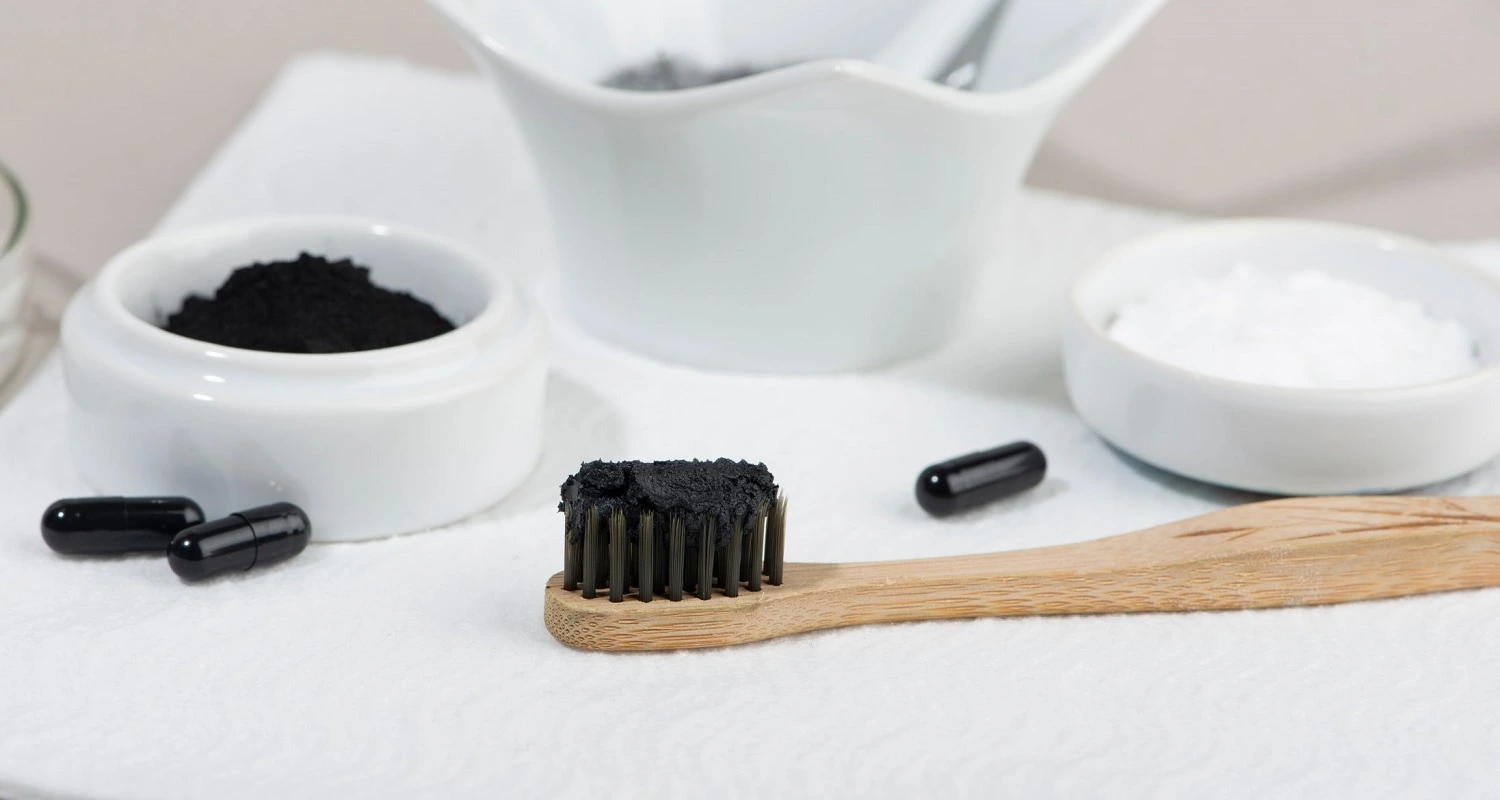
Conclusion
● Activated charcoal is a popular, natural option for teeth whitening, known for its ability to absorb stains and toxins, offering an alternative to harsh chemicals.
● Its effectiveness focuses on superficial stains, although its impact on deep stains is limited.
● Despite some benefits, such as reducing harmful bacteria and improving breath, there are concerns about dental abrasion and increased sensitivity due to overuse.
● Dentists warn of variable results and the need to follow instructions for use carefully.
Frequently Asked Questions
Is charcoal effective for whitening teeth?
The inclusion of activated charcoal in toothpastes could contribute to the elimination of superficial stains on the teeth. Due to its slightly abrasive nature and its ability to absorb such stains to some degree, charcoal presents itself as an option. However, there is no evidence that it has significant effects on stains under the enamel or that it has natural whitening properties.
Is charcoal really effective in removing stains from teeth?
Activated carbon has the ability to eliminate stains, focusing mainly on superficial ones without reaching deeper layers. However, the drawback is that it can leave new gray stains, especially on older teeth. Additionally, there is a possibility of buildup around dental crowns, veneers, and bridges.
How long does it take for activated charcoal to whiten teeth?
The effectiveness and time needed to see results may differ depending on various aspects, including personal habits and the nature of the enamel stains. Changes can usually be seen after a week of consistent use.
Is charcoal effective for yellow teeth?
There is a popular belief that charcoal is effective in whitening teeth, particularly against stains caused by substances such as coffee, tea and wine. However, there is currently no scientific evidence to support the claim. In fact, many dental experts recommend their patients avoid using activated charcoal, arguing that its effects could be more harmful than beneficial.
Share:
References
1. What to know about activated charcoal whitening. (MAR 17, 2022). WebMD. https://www.webmd.com/oral-health/what-to-know-about-activated-charcoal-whitening
2. Santos-Longhurst, A. (Jun 18, 2019). Charcoal toothpaste for teeth whitening: Does it work? Healthline. https://www.healthline.com/health/dental-and-oral-health/charcoal-toothpaste
3. Torborg, L. (Jul 28, 2015). Mayo Clinic Q and A: Many safe choices are available to help whiten teeth. Mayo Clinic News Network.
https://newsnetwork.mayoclinic.org/discussion/mayo-clinic-q-and-a-many-safe-choices-available-to-help-whiten-teeth/
4. Maciel, J. L. B., Geng Vivanco, R., & Pires-de-Souza, F. de C. P. (2023). Remineralization, color stability, and surface roughness of tooth enamel brushed with activated
charcoal‐based products. Et al [Journal of Esthetic and Restorative Dentistry], 35(7), 1144–1151. https://onlinelibrary.wiley.com/doi/10.1111/jerd.13057
5. Ribeiro, E. P., Emídio, A. G., Zanin, G. T., Melo e Silva, V. F. F., Lopes, M. B., Guiraldo, R. D., & Berger, S. B. (2023). Dental aesthetic perception of patients submitted to activated charcoal-based bleaching agents: A randomized clinical trial. Journal of Dentistry, 139(104744), 104744. https://doi.org/10.1016/j.jdent.2023.104744
6. Vertuan, M., da Silva, J. F., de Oliveira, A. C. M., da Silva, T. T., Justo, A. P., Zordan, F. L. S., & Magalhães, A. C. (2023). The in vitro effect of dentifrices with activated charcoal on eroded teeth. International Dental Journal, 73(4), 518–523. https://doi.org/10.1016/j.identj.2022.11.001


